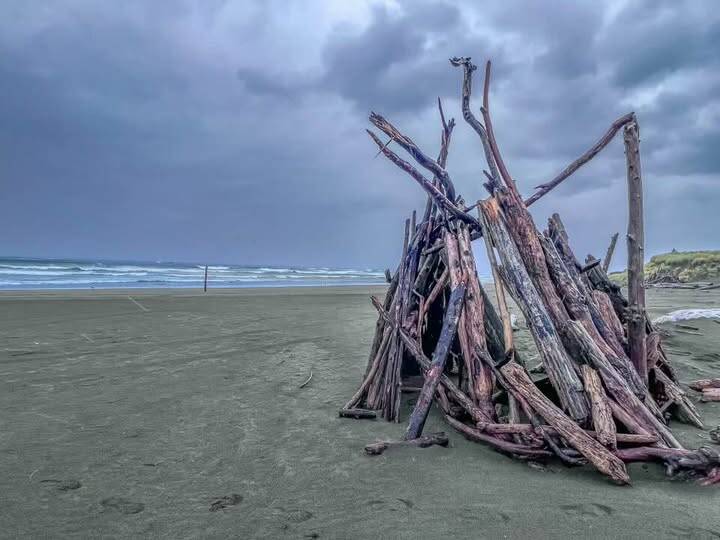© 2025 Robert Sickles
Many things have been tried by cities in the name of progress. Planning departments can’t help but tinker with zoning changes and urban renewal. Whether a great thing for civic pride or a lure for tourist dollars, it’s often a boondoggle for developers, and a revenue boost for the tax collector. When it’s all of those things and it works well, hoorah! I have in mind the stories of three Washington State cities that demonstrate different degrees of brilliance and/or insanity.
LEAVENWORTH
(not the place with the penitentiary – that’s in Kansas!)

The little mountain pass town of Leavenworth, Washington is a curiosity. It was a noisy and dusty mess with old U.S. Highway 2 running right through it. Several decades ago, new highway construction bypassed the town, and for a time the place was dwindling. But someone with a stroke of genius realized that Leavenworth sat in a lovely valley surrounded by snow-covered peaks that could be mistaken for an Alpine setting, and the entire town signed on to transform Leavenworth into the Oktoberfest and Lederhosen capital of the Northwest. Leavenworth’s buildings are decorated to look like chalet lodges with half-timber facades and fresco murals. Street names and business signs are all in German. Don’t worry about whether it's pretending to have Swiss Alps, German Bavarian or Austrian Tyrol ambiance—Just suspend disbelief and enjoy a “Generic Germanic Mountain Village.” Jolliness is mandatory here, Willkommen in Leavenworth!!
The surreal oddity of it all is balanced by actual year-round activities nearby, including snow sports, whitewater rafting, mountain trails, wineries and natural beauty of all four seasons. In the village, take in sleigh rides, hayrides, Christmas bell ringing, Alpen horns, polka dancing and yodelers. The stores in town sell nutcrackers and cuckoo clocks; the biergartens serve bratwurst and kraut to oom-pah-pah music. If you are simply hankering for American food, it is there to be found, as long as you can read menus in the town’s official old-style Fraktur font.

Depending on your mindset, you may wish you could enjoy it every year, or you get your fill of it on day one. Leavenworth may be a super quirky town, but somehow it draws crowds.
OCEAN SHORES

Ocean Shores with its wide sandy beach is the easiest drive to a seaside town for many of us Washingtonians. One would think that the hotels and rentals would be booked up, its restaurants and shops springing to life for the tourist season. But summer, we’ve found, can be as wet and windy as winter. I don’t know, maybe the on-season is also the off-season. Beachcombing and clam digging if you like, but it’s a rare day when you feel like sunbathing or bobbing in the waves. Diehards actually stay the whole week of their intended vacation. (We are not diehards, BTW.) With the drizzly wind whipping up beach sand to sting your face, shopping or a cozy pub near a fireplace should be a good alternative.
But… there’s a problem. I realized that it’s not only weather, but the city plan of Ocean Shores that is unfriendly. There isn’t a compact town center that’s welcoming for pedestrian shopping and dining. In some conceptual fiasco of city planning, the little town was allowed to sprawl sporadically along a mile-long main drag of parallel one-way avenues with a wide, barren median. Evidently, the dream was that the boulevard would grow into a splendid resort destination. Browsing the art galleries or whatever can be frustrating; you park here and visit one or two, then back in the car to drive a long empty block or so to the next, and so on down the boulevard. No U-turn if you missed something—you have to find a cut-through to cross over to the opposite side of the one-way nonsense to backtrack. Only to find it's closed early for the season.
TUMWATER
Tumwater is Olympia’s neighbor city to the south. Founded in 1845, it was actually the first settlement in Washington Territory, originally named Newmarket. The name Tumwater comes from the local Native Chinook word for “Waterfall” after the series of rapids and cascades of the Deschutes River.
The city once had a historic town center. In the 50’s, when Interstate Highway planners needed a route through the area, the Tumwater city council voted willingly to allow demolition of the downtown to make way for progress. And from that gut punch, in my opinion, the city is still staggering. Like lots of western states cities that mushroom up around a freeway off-ramp, Tumwater seems less a town and more a series of roundabouts, subdivisions, and strips of shopping centers. The loss of the town center must have had a long-term effect in some way on the area’s self-esteem.
Tumwater gained some renown from early times as the home of the Olympia Brewing Company, now defunct. The old Brewery closed down and has stood a mildewing hulk for over twenty years. Passing through the city on the Interstate, the derelict brewery buildings are about the only things visible. It seems no one can think of a reason to demolish the brewery or repurpose its polluted campus, I'd say because Tumwater’s soul and its will to thrive lies buried under millions of tons of concrete.
A historic oak tree in Tumwater has stood since the time of the Pilgrims’ landing at Plymouth Rock. Despite marking the path of the Oregon Trail and being a traditional landmark for local Indian tribes, it was in peril because the mayor decided it was in the way of progress. A preservation group has prevailed, at least for now, to save the huge 400-year-old tree from the chainsaw. Time will tell if everyone agrees that history matters and that honoring the past could bring a little light to Tumwater’s future.


Add comment
Comments
great work!